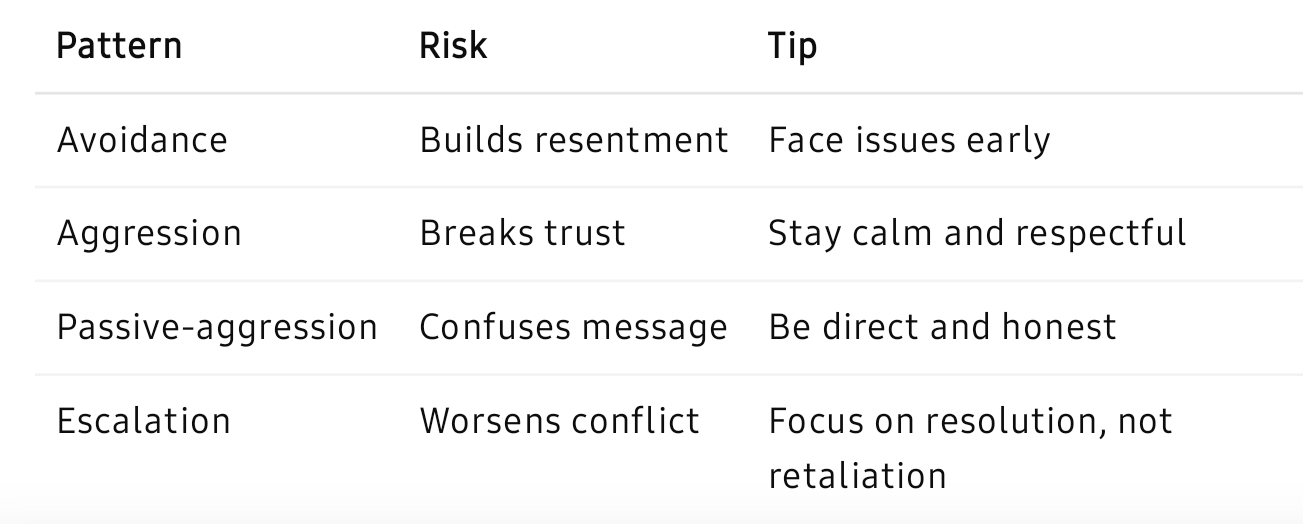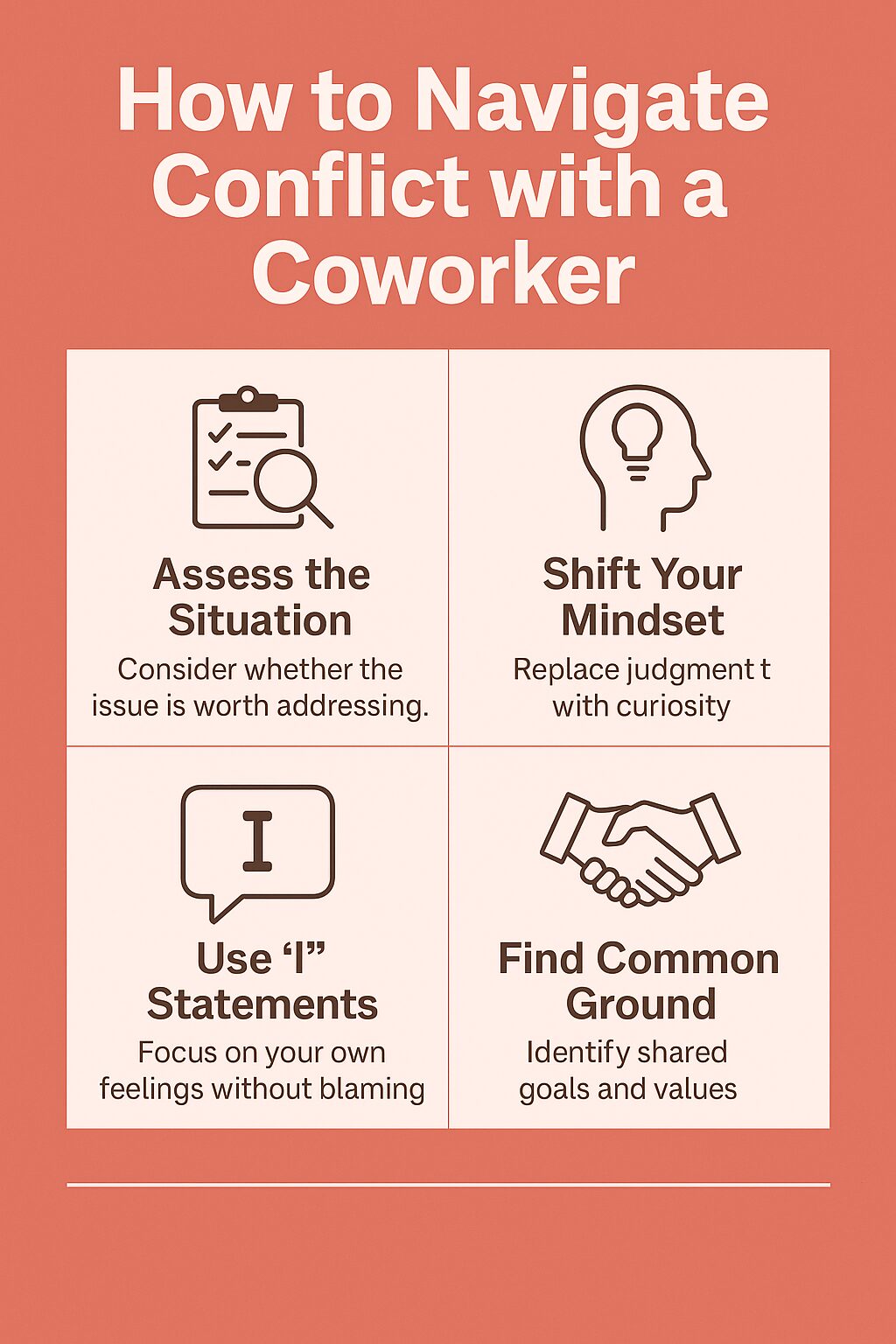🧩 Conflict is inevitable in professional environments.What matters most is how you deal with it.
Gallo emphasizes that the goal isn’t always to win or even agree—it’s to manage tension constructively, preserve relationships, and create a way forward.
🎯 Step-by-Step Strategy to Navigate Conflict
1. Assess the Situation First.
Ask yourself:Is this worth addressing?What do I want from this situation: resolution, understanding, or simply acknowledgment?
Be aware of your emotions and don’t enter a conversation in anger.Avoid conflict avoidance—ignoring it often makes things worse.
2. Shift from Combative to Curious.
Approach the other person with curiosity, not judgment.Example question: “Can you help me understand what happened from your perspective?”This helps de-escalate tension and opens the door to honest dialogue.
3. Use “I” Statements.
Own your feelings without blaming.
❌ “You’re always dismissive.”
✅ “I felt dismissed during the meeting, and I’d like to understand if that was your intention.”
4. Find Common Ground
Look for shared goals or values.
Reinforce that you’re both on the same team or want a shared outcome (e.g., better collaboration, project success).
5. Engage in a Real Conversation, Not a Confrontation.
Practice active listening: summarize what the other person says to show you understand.
Avoid multitasking or checking your phone—your focus matters.
6. Manage Yourself During the Talk.
Monitor your tone and body language.
Stay calm—even if the other person doesn’t.If emotions escalate, suggest taking a break and resuming later.
7. Don’t Aim to “Win”,Aim to resolve, not to be right.
Being overly focused on proving your point can damage the relationship.
8. Know When to Walk Away Some conflicts can’t be resolved directly, or the other party may be uncooperative.
🛡️ Additional Tips from Gallo
Don’t triangulate: Avoid dragging others in to take sides.
Practice empathy: Try to imagine the pressures or context influencing your coworker’s behavior.
Self-reflection: Regularly assess how your own behavior may contribute to the conflict.
🔁 Common Conflict Patterns to Recognize

✅ Final Takeaway
Conflict doesn’t have to be destructive. If handled with empathy, structure, and calm, it can actually deepen trust, clarify expectations, and improve teamwork.

Leave a Reply